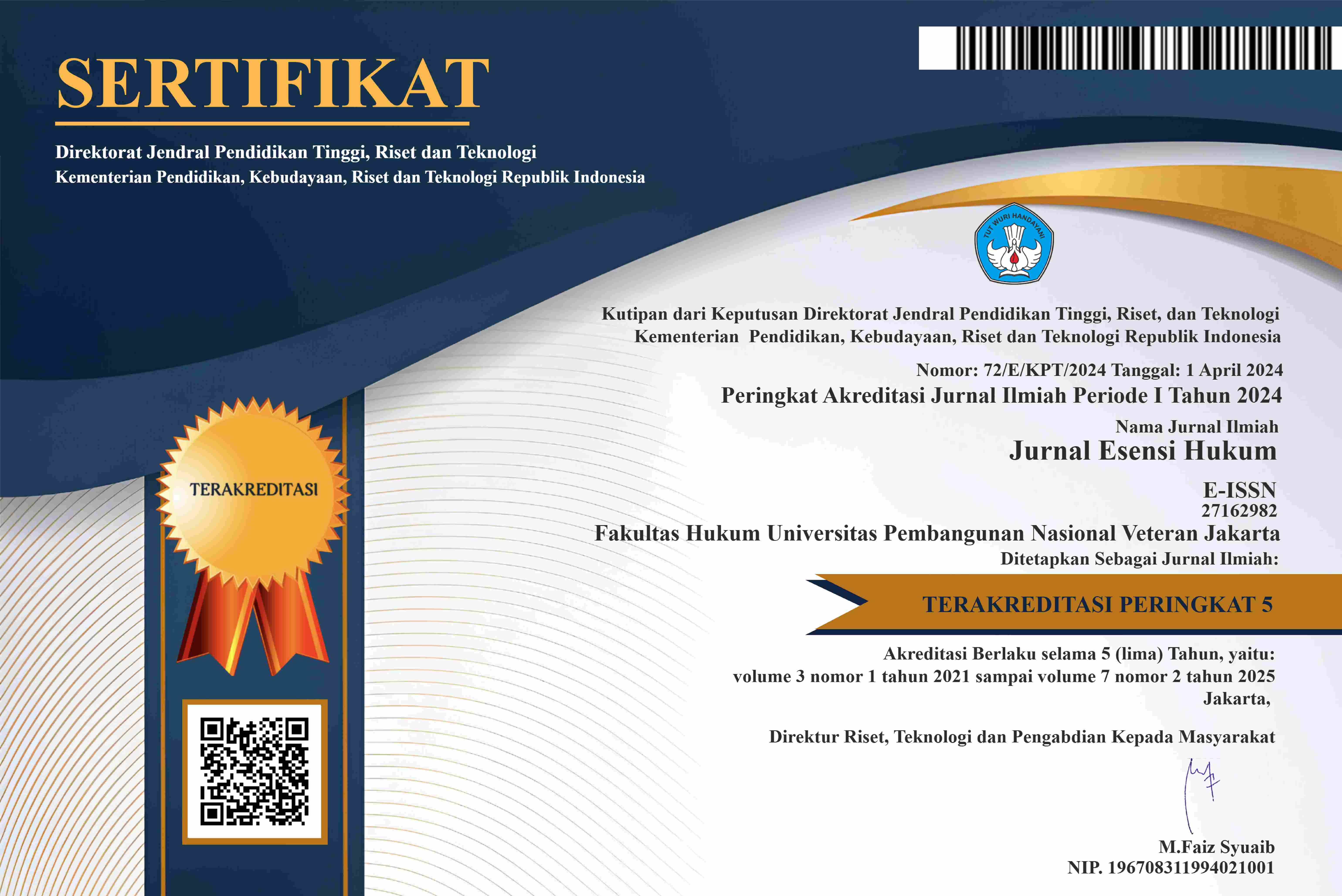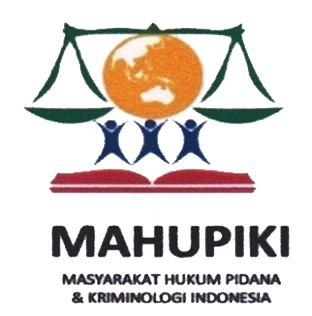HAK KEKAYAAN INTELEKTUAL ATAS TERCIPTANYA KARYA HASIL ARTIFICIAL INTELLIGENCE (AI) DI TINJAU DARI SEGI SEJARAH DAN IMPLIKASI TERHADAP HUKUM
Abstract
The purpose of this writing is to provide a view that with the rapid development of technology, it certainly makes new dynamics related to Intellectual Property Rights produced by Artificial Intelligence (AI) against the current law, which in fact has not been able to accommodate the development of AI technology. the author's research method is the historical method. That the historical method is a method by examining events that have occurred in the past, starting from the stages of heuristics, criticism, interpretation, and historiography. Intellectual property should have existed for a long time, namely in ancient China. At that time, Intellectual Property was in the form of patents given to silk craftsmen specifically for the kingdom. For this performance, the kingdom then gave the title to the craftsman, namely the title of the king's vassal. That the development of Intellectual Property is growing with the times, until the emergence of AI. The emergence of AI is not matched by existing regulations, so it is necessary to immediately formulate these regulations by policy makers.
Downloads
References
Comino, S., Galasso, A., & Graziano, C. (2017). The Diffusion of New Institutions: Evidence from Renaissance Venice’s Patent System. In National Bureau of Economic Research (No. 24118). https://doi.org/10.3386/w24118
Furdock, B. (2023). Origins of Patent Law. Chicago-Kent Journal of Intellectual Property. https://studentorgs.kentlaw.iit.edu/ckjip/origins-of-patent-law/#_ftn3
Fusco, S. (2020). Lessons from the Past: The Venetian Republic’s Tailoring of Patent Protection to the Characteristics of the Invention. Journal of Technology and Intellectual Property, 17(3), 301–348. https://doi.org/10.2139/ssrn.3331687
Gunn, W. (n.d.). The History of Patents. Wilsongunn.Com. Retrieved November 11, 2024, from https://www.wilsongunn.com/history/history_patents.html
Intellectual Property in the Digital Age. (n.d.). Global Intellectual Property Convention. Retrieved November 11, 2024, from https://www.globalipconvention.com/blog/intellectual-property-challenges-in-the-digital-age
Mceniery, B. (2016). Patent Eligibility and Physicality in the arly History of Patent Law and Practice. University of Arkansas at Little Rock Law Review, 38(2), 175–207. https://lawrepository.ualr.edu/lawreview/vol38/iss2/2/
Nyaboke, Y. (2024). Intellectual Property Rights in the Era of Artificial Intelligence. Journal of Modern Law Amd Policy, 4(2), 58–72. https://doi.org/10.54389/voaf9040
Quinn, G. (2012). The Law of Recipes: Are Recipes Patentable? Ipwatchdog.Com. https://ipwatchdog.com/2012/02/10/the-law-of-recipes-are-recipes-patentable/id=22223/
Rakha, N. A. (2023). Exploring the Role of Block chain Technology in Strengthening International Legal Guarantees for Investment Activity. International Journal of Law and Policy, 1(5), 1–8. https://irshadjournals.com/index.php/ijlp/article/view/37
Rizkia, N. D., & Ferdiansyah, H. (2022). Hak Kekayaan Intelektual Suatu Pengantar. In E. Damayantti (Ed.), Widina Bhakti Persada (Cetakan Pe, Vol. 3, Issue 1). Widina Bhakti Persada Bandung. https://medium.com/@arifwicaksanaa/pengertian-use-case-a7e576e1b6bf
Ubaydullayeva, A. (2023). Intellectual Property in the Era of Artificial Intelligence: Challenges and Solutions. Uzbek Journal of Law and Digital Policy, 1(3), 1–15. https://doi.org/10.59022/ujldp.93
WIPO. (n.d.). WIPO-A Brief Hostory. World Intellectual Property Organization. Retrieved November 11, 2024, from https://www.wipo.int/about-wipo/en/history.html
Copyright (c) 2024 Jurnal Esensi Hukum

This work is licensed under a Creative Commons Attribution-ShareAlike 4.0 International License.
Authors who publish with this Journal agree to the following terms:
1. Author retain copyright and grant the journal right of first publication with the work simultaneously licensed under a creative commons attribution license that allow others to share the work within an acknowledgement of the work’s authorship and initial publication of this journal.
2. Authors are able to enter into separate, additional contractual arrangement for the non-exclusive distribution of the journal’s published version of the work (e.g. acknowledgement of its initial publication in this journal).
3. Authors are permitted and encouraged to post their work online (e.g. in institutional repositories or on their websites) prior to and during the submission process, as it can lead to productive exchanges, as well as earlier and greater citation of published works.
4. 
This work is licensed under a Creative Commons Attribution-ShareAlike 4.0 International License.






2.png)

